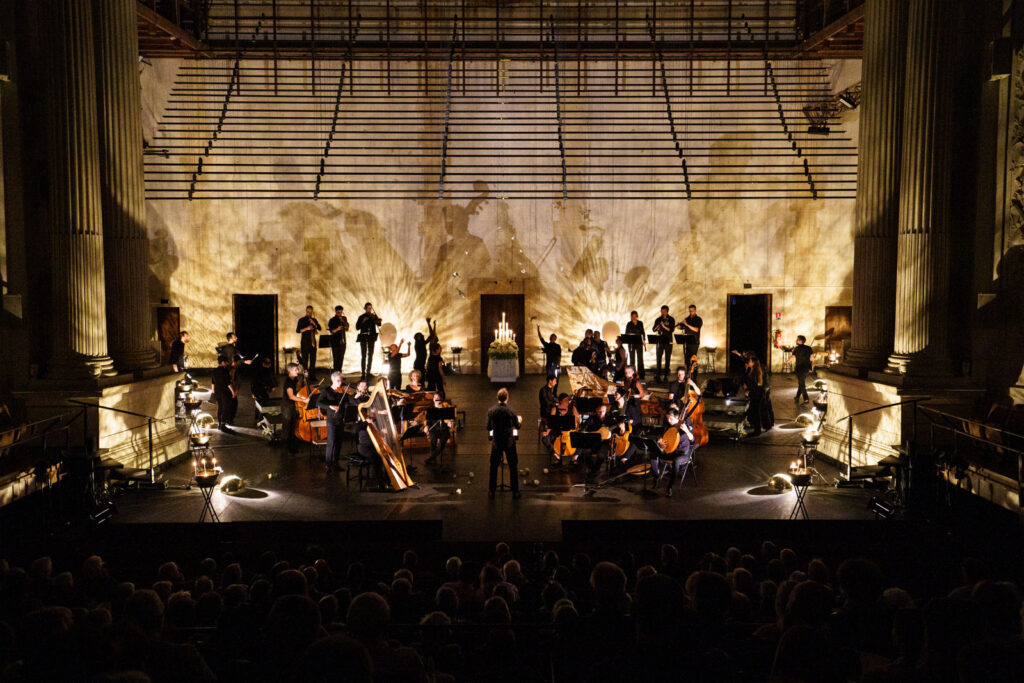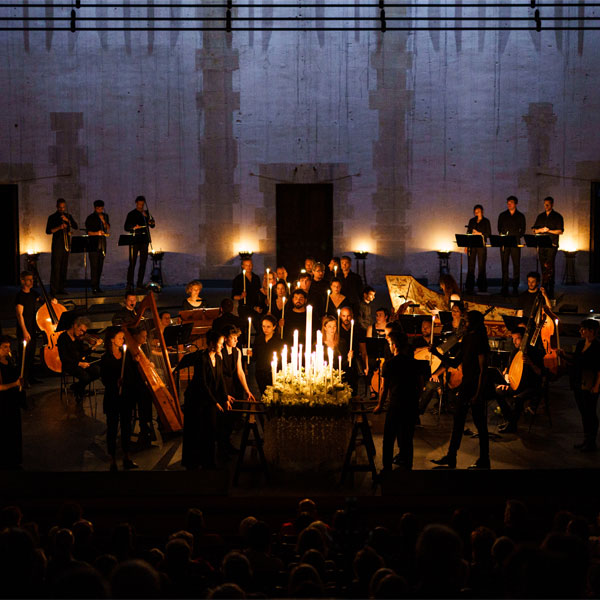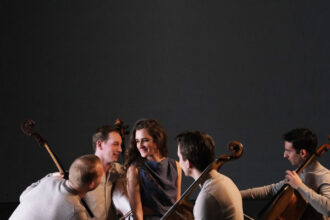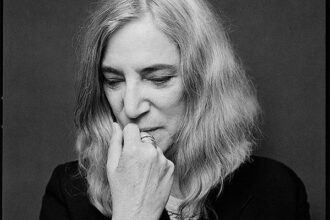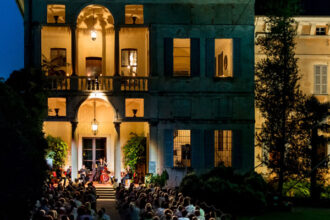Monteverdi: we dive back to the roots of our music.
Another masterpiece that is also an icon of the early 1600s: Monteverdi’s Vespro della Beata Vergine.

This year we have another masterpiece that is also an icon of the early 1600s: Monteverdi’s Vespro della Beata Vergine. This version with Simon-Pierre Bestion conducting his Compagnie La Tempête is particularly fascinating. He has inserted the gregorian antiphons inspired by the falsobordone and use of the voice typical of the popular liturgies in Corsica and Sardinia.
La Tempête alternates gregorian antiphons, pieces by Monteverdi, and psalms in falsobordone, taken from an anonymous manuscript dating from the 1700s, conserved in Carpentras. These anonymous songs, encountered over the centuries all around the Mediterranean, are what’s left of a vast oral tradition, with harmonies evoking Italy, Sardinia, and Corsica. This offers a fairly realistic panorama of musical practice in the mid-1700s throughout the Mediterranean. On the one hand there were monodic religious songs, and on the other there was polyphony, almost always improvised, popular in the churches. Then there was the more cultured concertante music written by a composer brought up on these different pratices.
This interpretation finds its essence in the organic and emotional force of this veritable sacred opera dedicated to the Virgin Mary, and sends listeners straight into the heart of Monteverdi’s powerful writing. It immerses them in a choir with powerful timbres and an orchestra teeming with colours, and offers them a jubilant sound experience.
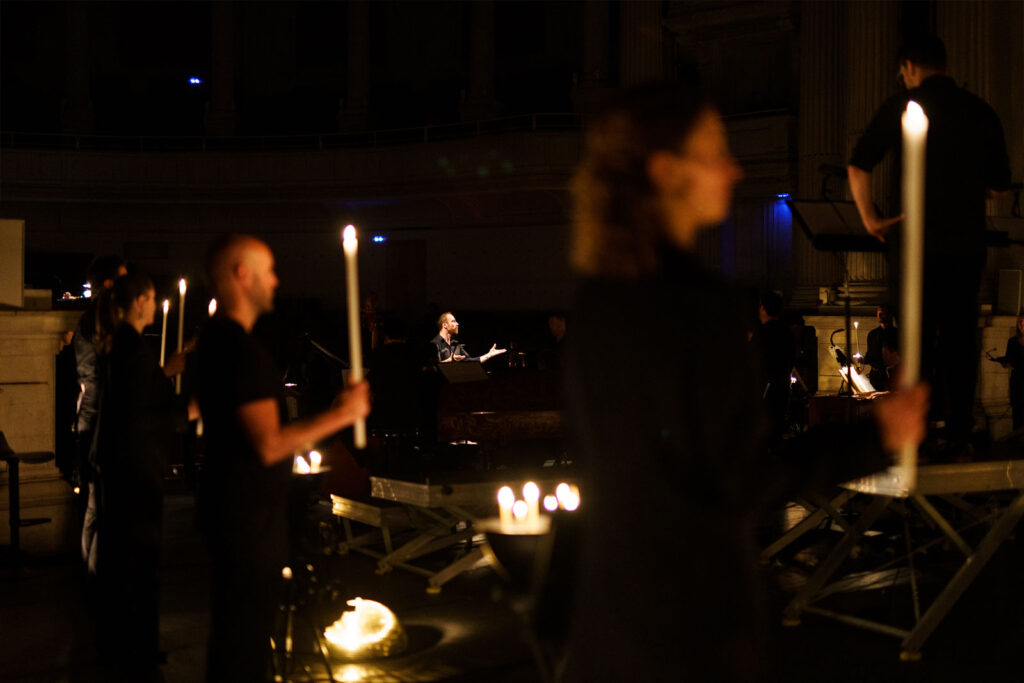
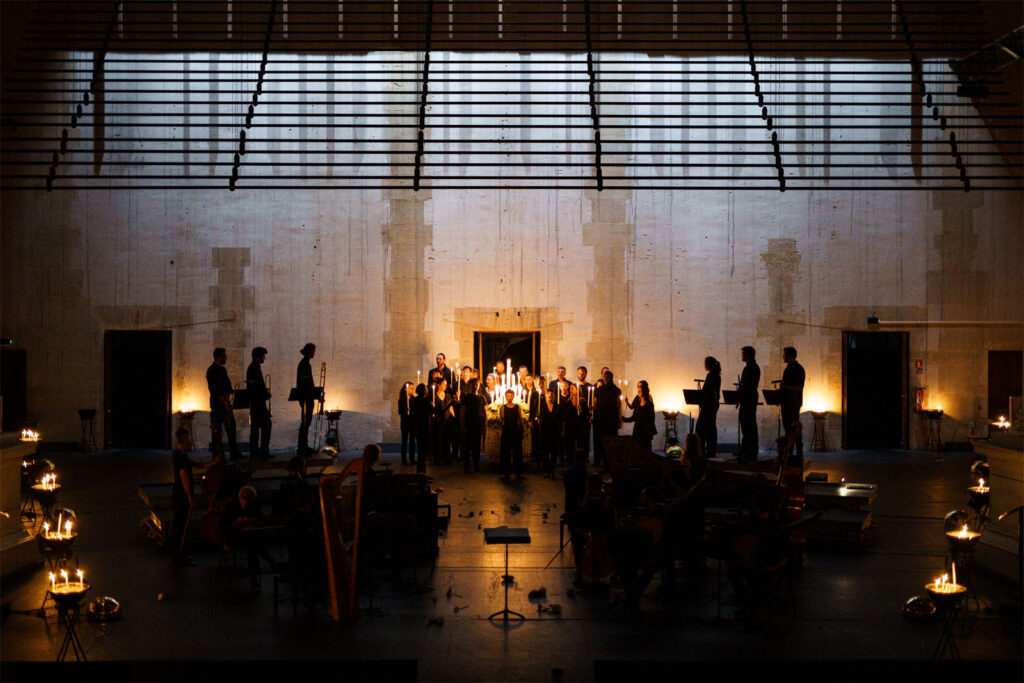
“[…] Vespers of the most blessed virgin for more voices with several sacred concertos suitable for princely chapels or apartments, pieces recently composed by Claudio Monteverdi and dedicated to Pope Paul V. In Venice, at Ricciardo Amadino’s, 1610”.
«Through this introduction of the original edition of the Vespers for the Blessed Virgin, you can notice how, in 1610, Monteverdi endeavours to engage the favours of the Pope. This is hardly surprising if we put it into its context : during nineteen years, Claudio Monteverdi worked under the extremely favourable auspices of his employer, Duke of Mantua, who largely encouraged its creation et allowed him to edit not less than five books of madrigals, two operas (Orfeon and Arianna) and many ballets.
However, the imminent death of the latter announce the decline of the artistic dynamism that characterized Mantua under his authority, and Claudio Monteverdi is then looking for other spheres that would allow him to make shine his career. At this time, he substantially personalised his style, and his reputation is settled across all Europe, especially thanks to his first opera, Orfeo (1607). Yet, Monteverdi knows pertinently that the music in Roma is mainly chosen by the very conservative circle of the Pope, and so he has to comply with certain rules.
The public could not be anything else but surprised, after all these years of secular music, when they discovered, in 1610, a collection of sacred music. However, to me, Monteverdi does not stop here : he mixes theater into his Vespers. From the first piece, he plays the opening music of his Orfeo, complemented by a chorus reciting a sacred text.
Then we continuously find similarities between the exacerbated expression of the sacred texts and the brand new way to set a secular drama to music, that can be especially heard in the pieces dedicated to the soloists where the very smooth expression perfectly accompanies the extracts of Song of Songs in order to better speak of love and sensuality in what is sacred. This divine and secular distance between two worlds that are now separate probably did not exist.
The Vespro della Beata vergine are a striking example of this will to join arts in a real dramaturgy, even if it was never staged. It is quite probable they were played for the first time in Duke of Mantua’s palace, probably not in their entirety and with a smaller number of musicians in proportion to the ressources of this city.
Despite being composed three years before his appointment in the city, the Vespers score perfectly embodies Venice : it offers a music coming from diverse cultures, in the image of the byzantine architecture of San Marco Basilica and of the so cosmopolitan character of this city, crossroads of civilizations. For example, I think there is a strong correlation between the vocal technique asked by Monteverdi to his soloists and what we could ask to singers of Ashkenazi tradition in synagogues, or even to muezzins. We know that those confessions were present in Venice at that time and coexisted, including through transcultural and commercial exchanges of the city on the shores of the Mediterranean and the Middle East.
In order to rediscover the real sense of the score it appeared interesting to me to oppositely disposed a faithful musical interpretation as could have done Monteverdi and a contemporary musical ear in order to go beyond the historical musical research and to return a very creative and innovative univers.
This can be expressed through the search of the orchestra tones and of the plucked-string continuo that offer numerous orchestral possibilities while strongly emphasizing the rhythm and the harmony.
It also results in the presence of numerous instruments interpreting the bass part (traditionally improvised by the continuo) like the serpent (very rare instrument with a smooth sound close to the Jew Shofar one), the dulcian (Italian ancestor of the bassoon ), the lirone (16-string plucked instrument), the double bass, the organ or even the violas da gamba. This sound, usually carried by the lower notes, allows a optimal balance with the bright sound of the brass instruments but also with the voices, generally written in long vocal ranges and sometimes with high trebles».
Simon-Pierre Bestion, conductor
